Using Multi-Media to Facilitate Reminiscence
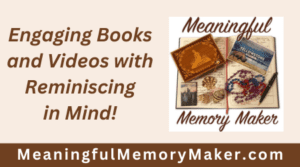 Submitted by Lori K. Yauch
Submitted by Lori K. Yauch
M.A., CCC-SLP
Owner/Manager
Meaningful Memory Maker
“Though you are not here to hold me, in the echoes, I can hear your voice. But still, one question fills my day, dear, the answer I most longed to know. Each moment since you went away, dear, my question, Kate, is where’d you go?” (Marc Shaiman, Scott Wittman, 2018)
Although not written to describe the separation and loneliness of those with dementia, this lyric can apply. As the disease progresses, an individual can lose communication skills, become sensitive to certain kinds of touch, and seem to move further and further away from caregivers, friends, and loved ones, which leads them to ask:
- “Where’d you go?”
- “How can I reach you?”
- “What can we do together to make this journey easier?”
There are many immediate answers to these questions. You can:
- Share a meal or a beverage.
- Offer a warm blanket or a soft stuffed animal to ease agitation.
- Share simple chores that involve sorting and folding.
- Turn the lights on at night to calm fears.
Or, as a recent Dementia Map post from InsightFormation titled, Music: A Secret Sauce for Dementia Care offers, use music as a strategy. This article explored music’s profound impact on memory.
Music is a wonderful gateway to communication and memory. But what happens when you pair music with a moving image?
As a Speech-Language Pathologist working in long-term care, I asked myself that question. If I brought multi-media into my workplace, could I reach the minds and communication abilities of my patients /residents with dementing diseases and neurological disorders? Could I discover where they went and be invited to come along?

Using Multi-Media to Facilitate Reminiscence:
Where It Began
When I began my foray into multi-media as a communication strategy, I needed to find the fun in a job that was becoming increasingly stressful after many years of practice.
For me, fun was classic movies from the 1930s, 1940s, and 1950s and anything from the MGM Freed Unit. So, when the Activity Director at the nursing home where I worked asked me if I had a movie to celebrate the Thanksgiving holiday, I immediately obliged with the Spencer Tracey drama, The Pilgrim Adventure.
After gathering our residents in a small group around the TV and showing selected scenes, I began asking questions about the film’s content. The group members were alert and attentive. As the weeks progressed and the group grew.
I then reached into my collection and found my favorite musicals—Gene Kelly’s Summer Stock and Brigadoon, Fred Astaire’s The Band Wagon and Holiday Inn, and the most amazing thing happened – the members were not just alert and attentive, they were engaged! They were singing and dancing in their seats, answering questions, and sharing stories about their lives with each other — the hallmark of the power of reminiscence.
The Road To Reminiscence
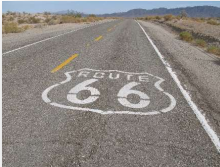
As my career moved forward to consultation at other long-term care centers, I observed that often during the afternoon movie, the residents were sleeping. How disappointing! The films were classics, cinema masterpieces (The Sound of Music, Hello Dolly) with lessons to learn and stories to share.
So, why was no one sharing? Was it because watching a movie was a traditionally sedentary activity? Or was it because the group leader didn’t know the questions to ask to keep the participants awake and engaged?
The answer to both questions was Yes. “Yes” propelled me to gather my favorite movie musicals, select the scenes, and write questions that allowed for the most interaction and engagement in a group setting. This resulted in the creation of:
Movies and Music: A Guide To Turning The Classic Movie Musical Into An Interactive Event
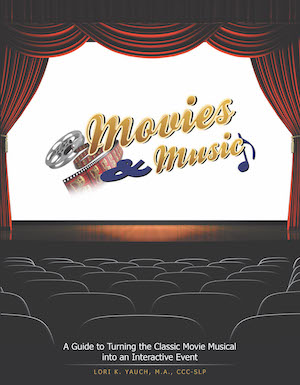
The Guidebook I created walks you through how to use classic movies like Singin’ in the Rain, Oklahoma, and Meet Me in St. Louis to facilitate reminiscing, conversation, and social interaction.
I chose the musical genre as the basis for this activity because classic movie musicals have easily followed plots (boy meets girl, boy gets girl.)
The characters (good and bad) are easily identified.
The colors are bright.
The songs are memorable, and the situations depicted in the films have relatable contexts that facilitate reminiscing.
I chose twelve films to follow the calendar. (Remember: This idea was sparked by an inquiry from my friend, the activity director, who was all about the holidays!)
I wanted her to have an additional way to celebrate each month!
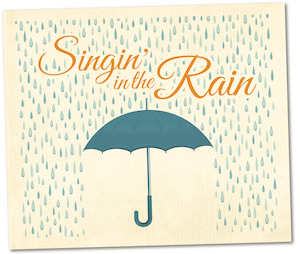 |
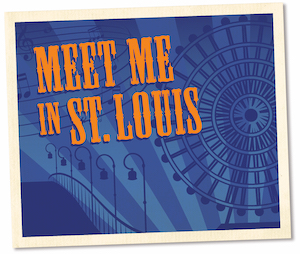 |
| Courtesy Lori K. Yauch, M.A., CCC-SLP | |
I wrote monthly articles on my website to help Guidebook users develop richer interactions. Each blog post has thought-provoking questions and insights about each movie that can help you and your movie goers view the film in a new light.

Themed articles began in 2013. Some recent themes include ‘Get Happy’ (2019), ‘Isolation’ (2020), ‘Focus on Friendship’ (2021), ‘The Empowered Woman’ (2022), and ‘The Many Faces of Romance in The Movie Musical’ (2023).
The Fun Starts Here, or How It Works
Movies and Music is one of the easiest activities you will ever use. Just “Grab Your Guide and Go!”
Gather your participants around the TV, grab the Guidebook, select the month or your favorite movie (all are available on DVD, and most are free to rent from your local library), then press play!
The Guidebook highlights the scenes, where to start and stop the DVD, and the questions to ask to garner the most communication and interaction.
Because you are not watching the entire film, demands on attention are diminished, and more time can be spent interacting.
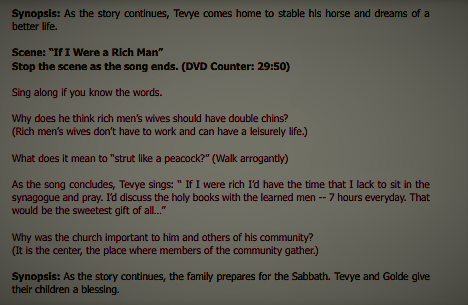
The Clinical Aspects
Movies and Music is the perfect “Grab and Go” activity, particularly for the busy professional (or family member) with little to no time to prepare.
For clinicians and other professionals, the guidebook offers clinical information regarding goal writing, documentation, and evidence-based practice.
For professionals and those with friends or loved ones with dementia, the research related to facilitated reminiscence shows:
“When someone is engaged in an activity that is meaningful, it involves regions of their frontal cortex that stimulate short-term memory and attention. Then if you can hold someone’s attention long enough with something that is meaningful, the very mechanisms that are breaking down in someone with dementia are actually being enhanced and activated.” (Tomaino, 2012)
Facilitated reminiscence is
“A social interactive activity designed to encourage the recall and discussion of pleasurable past experiences.” It is recommended that “when using props, choose materials that appeal to a variety of senses and support the selected topic or theme. Props and materials not only provide contextual support, they also provide pleasurable aspects of reminiscence.” (Harris, 2012)
In dementia care,
“The benefits of reminiscence are found in its application as a communication aid. It is proposed that talking about the past and reliving life events can support the individual’s self-esteem and identity and enable the individual with dementia to utilize retained memory ability.” (Biernacki, 2007)
Movies and Music utilizes these principles. Success is apparent in clinical practice.
What Fans Are Saying
As a Life Enrichment Director, having tools that provide engagement and stimulate conversation and memories are so helpful! Movies and Music provides a fun and engaging activity for everyone.
Nicole Will. Founder, WillGather.com
This is one of the simplest and most entertaining activities I have ever done. I highly recommend it to clinicians working with adults/geriatrics, regardless of the setting. You will not be disappointed.
Lisa C, M.S., CCC-SLP, New Bedford, MA
After 23 years of clinical practice, I am constantly looking for new items to add to my therapeutic toolbelt that will provide significant positive results toward clinical goals while grabbing and maintaining the attention of the patient and clinician. Movies and Music combines traditional easy-to-use stimulus materials with an entertaining flair that keeps the patient and therapist engaged while progressing toward functional communication goals. I utilize this book as an integral part of my clinical practice with rave reviews from those who matter most~ my patients.
Michael S., M.A., CCC-SLP, Palm Harbor, FL
Finding Connection and Making Meaningful Memories
While all the films in the Guidebook are great pieces of film history to which everyone should be exposed, they are also significant pieces of our history that weave into the fabric of our lives and fill us with wonderful shareable memories.
Shareable memories allow you to connect with those you care for and love wherever they are. Movies and Music is the errorless conversation starter that can be your “way in” to sing-a-longs, storytelling, and making new meaningful memories.
The journey through dementia care is long and often lonely for the traveler and the caregiver. Movies and Music and MeaningfulMemoryMaker.com seek to make the trip a little lighter for all of you by helping you find old memories, make new ones, and discover the fun along the way.
Thank you for joining me for a look into Movies and Music and a new way to reminisce with those you care for and love.
Please join me again when Meaningful Memory Maker shares additional ways to reminisce with more of our innovative products: the ABOUT Books, The Personal History Books, and The Lasting Memories Video Greeting.
 Submitted by Lori K. Yauch, M.A., CCC-SLP
Submitted by Lori K. Yauch, M.A., CCC-SLP
Owner/Manager
Meaningful Memory Maker

